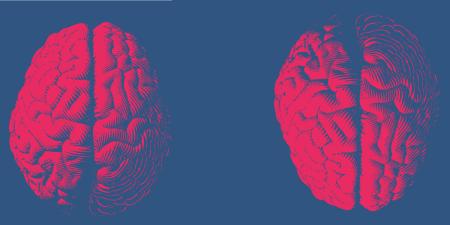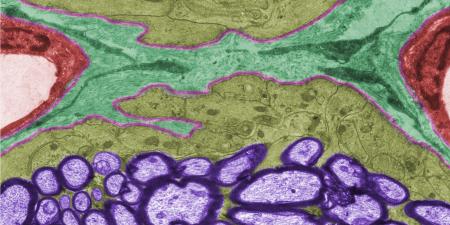Bioethicist Alexander Capron began a recent article on the subject of brain death by noting that "If one subject in health law and bioethics can be said to be at once well settled and persistently unresolved, it is how to determine that death has occurred."1 The "well settled" aspect is easy to understand—thousands of deaths are diagnosed daily on the basis of cessation of pulse and respiration. A much smaller number are diagnosed on the basis of neurological criteria—so-called brain death. Brain death requires the patient to be comatose, to have no detectable brainstem reflexes, and to have no neurological drive to breathe, even when high levels of carbon dioxide are allowed to accumulate in the blood (as happens during the required "apnea test"). Following the diagnosis of brain death, patients may be taken to the operating room while their body is still being perfused by a beating heart for recovery of organs like the heart, lungs, and kidneys.
The "persistently unresolved" aspect of death is more subtle, and becomes apparent only on closer inspection of the definition of brain death.2,3 According to laws in the United States, brain death requires the "irreversible cessation of all functions of the entire brain, including the brain stem."4 Currently accepted guidelines for diagnosing brain death examine many, but not all, testable brain functions.5 Not surprisingly, the closer one looks at brain function, the more one is likely to find. One brain function that is often present in patients diagnosed as brain-dead is the secretion of anti-diuretic hormone (ADH) from the posterior pituitary in response to changes in blood volume and osmolality. This may seem like nit-picking, but one of the most important reasons for equating the death of the brain with the death of the person is that the brain is seen as the "central organizer" of the body, such that when the brain is dead the body can no longer sustain physiologic integrity. Many of the components of the brain death exam measure functions that contribute nothing to physiologic integrity (such as determining whether the pupils react to light), yet functions that are critical to maintaining physiologic integrity (such as the regulated secretion of ADH) are ignored. The problem, in sum, is that current testing for brain death focuses on tests that have been selected because they are straightforward and easy to perform at the bedside, rather than focusing on functions that are essential to physiological integrity and that would truly answer the question of whether there is "the complete absence of all functions of the entire brain," as required by law.
Neurologist Alan Shewmon has performed careful neurological examinations on many patients who have fulfilled all of the legal requirements for brain death and yet who have "survived" for long periods of time (I have put "survived" in quotes, because all of these patients are legally dead). In the most dramatic case, he has documented the "survival" of a patient for more than 14 years following the diagnosis of brain death.6
Cases like these highlight the ways in which brain death can be very counterintuitive to our common-sense understanding of death. Consider, for example, the following table that compares features of patients who are alive, brain-dead, and heart-dead (by heart-dead, I mean patients declared dead on the basis of loss of pulse and respiration). The point of the table is to show that brain-dead patients share many more features with living persons than they do with heart-dead persons.
|
Features |
Living persons |
Brain-dead |
Heart-dead |
|---|---|---|---|
|
Heart-beating, warm, well-perfused |
Yes |
Yes |
No |
|
Breathing |
Yes |
Yes |
No |
|
Functioning vital organs |
Yes |
Yes |
No |
|
Capable of reproducing |
Yes |
Yes |
No |
|
Capacity for consciousness |
Yes |
No |
No |
(Note – some might quibble with my claim that brain-dead patients breathe, since one of the requirements for diagnosing brain death is the loss of the neurological drive to breathe. While it is true that brain-dead patients require a ventilator in order to breathe, so do many other patients who are not brain-dead. Christopher Reeve and other individuals with high spinal cord injuries cannot breathe without a ventilator, yet we do not consider them to be any less alive than those who breathe on their own.)
The table also shows that the one feature that clearly differentiates brain-dead patients from living individuals is loss of the capacity for consciousness. This fits with the very commonly held view that once a person has permanently lost the capacity to be conscious, life is no longer worth living. Some philosophers have taken this logic to the next step and proposed that once patients have been diagnosed with the permanent loss of consciousness, they should be considered dead for all ethical and legal purposes. This idea is the basis for the so-called "higher brain death standard," since patients who are permanently unconscious are generally understood to have lost function of the upper brain (the cortex and associated structures) but not necessarily function of the lower brain (the brainstem).
This view has been very popular in the medical and philosophical literature for decades, but suffers from one very significant problem. Patients who have been diagnosed with the persistent vegetative state are thought to be permanently unconscious, yet thousands of these patients are living in nursing homes throughout the world, breathing on their own, and fed through tubes that have been surgically placed in their stomachs. Under the "higher brain death standard," all of these patients would be legally dead, and we would be logically committed to treating them in the ways that we treat dead people, including burial and cremation. Yet few, if indeed anyone, would be willing to bury or cremate a person who was still breathing. Although there are other problems with the higher brain death standard, this reason alone is sufficient to show that such an approach, no matter how philosophically appealing, could never be implemented in our society.
Given all of these problems with the concept of brain death, what are possible solutions? The current approach is simply to ignore all of these problems and inconsistencies. Surprisingly, perhaps, this approach has much to recommend it. Our primary strategy for organ procurement and transplantation relies heavily upon the diagnosis of death by neurological criteria. Any serious disruption in the transplantation enterprise could jeopardize opportunities to save the lives of those in need of vital organs. As epitomized in the name of the old game show "Truth or Consequences," sometimes it is better to sacrifice devotion to the truth in order to optimize important consequences.7
On the other hand, we could take a fresh look at the foundations of the ethics of organ transplantation. One approach, which I have explored in more detail elsewhere,3 would reexamine the ethical requirements for organ donation. We currently require all organ donors to be diagnosed as dead, but as shown in the discussion above, diagnosing death is not as straightforward as it may first appear. Alternatively, we could allow patients and their families to request to be organ donors only in circumstances where the death of the patient that would follow the procurement of vital organs would be seen by the patient and family as a small loss in comparison to the opportunity to give life to others. Obviously, this would only be the case for patients with extremely profound neurological damage or patients within moments of death from cardiac or pulmonary failure. The main advantage of this approach is that it would "uncouple" the ethics of organ donation from the problematic determination of death. The main disadvantage of this approach is that it would require a complete restructuring of our ethical and legal approach to organ donation. This is unlikely to happen, as long as the "persistently unresolved" issues discussed above remain quietly ignored in relation to the "well settled" aspects of the diagnosis of death and the procurement of transplantable organs.
References
- Capron AM. Brain death: well settled yet still unresolved. N Engl J Med. 2001;344(16):1244-1246.
-
Truog RD. Is it time to abandon brain death? Hastings Cent Rep. 1997;27:29-37.
- Truog RD, Robinson WM. Role of brain death and the dead-donor rule in the ethics of organ transplantation. Crit Care Med. 2003;31(9):2391-2396.
-
President's Commission on the Uniform Determination of Death. Washington, DC: US Government Printing Office;1981.
- Wijdicks EFM. The diagnosis of brain death. N Engl J Med. 2001;344(16):1215-1221.
- Shewmon DA. Chronic "brain death": meta-analysis and conceptual consequences. Neurology. 1998;51(6):1538-1545.
- Brock DW. Truth or consequences: the role of philosophers in policy-making. Ethics. 1987;97(4):786-791.



